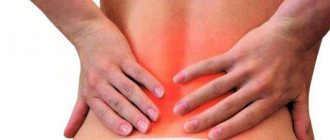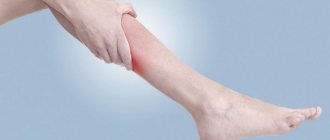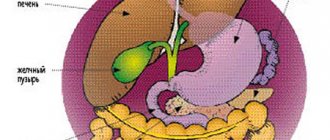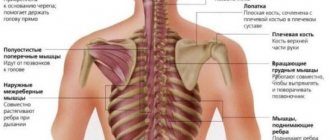JSC "Medicine" (clinic of academician Roitberg) operates a Pain Treatment Center. More details about the Pain Treatment Center
Pain Treatment Center, Neurologist
Alekseeva
Oksana Alexandrovna
22 years of experience
Doctor, highest qualification category, member of the European Association of Neurologists, Russian Interregional Society for the Study of Pain (ROIB), Association of Interdisciplinary Medicine. Has experience working in hospital and outpatient services. He has seven published works on neurology.
Make an appointment
A headache is one of the most unpleasant sensations a person can experience. Severe discomfort in the forehead, temples, crown or back of the head can indicate a variety of reasons, ranging from simple overwork and lack of adequate sleep to serious ailments that require immediate treatment.
Pain in the head can be throbbing, aching, pressing, cutting, squeezing. Its nature, degree of intensity, as well as localization often make it possible to determine the specific cause of its occurrence.
Causes of headaches
If you have a headache in your temples, this may indicate the presence of:
- high blood pressure (hypertension);
- low blood pressure (hypotension);
- food or chemical poisoning;
- infectious disease.
If your head hurts from behind, i.e. in the back of the head, this indicates:
- cervical osteochondrosis;
- high blood pressure.
If the frontal part of the head hurts, then most likely the patient has the following ailments:
- frontal sinusitis;
- meningitis;
- pneumonia;
- pinched occipital nerve;
- increased intracranial pressure.
If a headache begins to ache in the eye area, the specialist may suggest the following reasons for the patient:
- migraine;
- glaucoma;
- autonomic disorder;
- overstrain of the optic nerve.
Diagnostics
Diagnostic measures are carried out by a neurologist. If necessary, an infectious disease specialist, therapist, surgeon, and other specialists are involved in the examination. The purpose of the conversation with the patient is to clarify complaints, study the nature of the headache, and collect anamnestic data. The results of an external examination are often uninformative. In case of injuries, wounds, abrasions, local swelling, and bruises are found. In case of vascular pathologies, an increase or decrease in blood pressure is determined.
Assessment of the somatic status, identification of various syndromes (intoxication, infectious-toxic, characteristic of impaired renal function and respiratory system) allow us to suggest a possible cause of the symptom and determine the direction of further examination. The following techniques can be used:
- Neurological examination
. Muscle strength, sensitivity, and reflexes are assessed. The study is informative for meningitis, arachnoiditis, encephalitis, intracranial hypertension, and in the late stages of atherosclerosis. - X-ray of the skull.
Most indicative of injuries. Allows you to avoid damage to hard structures (fractures of the arch and base). In chronic intracranial hypertension, including in patients with arachnoiditis, osteoporosis of the dorsum sella and digital impressions are detected. - Electroencephalography.
Performed to identify and assess the severity of brain dysfunction. With convexital arachnoiditis, it may indicate the presence of foci of epileptogenic activity. - Ultrasonic methods
. Echoencephalography is used at the initial stage of the examination. It is mandatory for suspected TBI; it makes it possible to quickly confirm displacement of midline structures, cerebral edema, and hydrocephalus. Duplex and Doppler ultrasound are recommended for the study of cerebral circulation. - and MRI.
They are clarifying diagnostic methods. They are performed to assess the structure of brain tissue, determine the location and nature of focal changes. Contrast studies are effective in vascular diseases. - Lumbar puncture.
It is used to confirm meningitis, arachnoiditis, hydrocephalus of various origins, and to clarify the characteristics and severity of TBI. The resulting cerebrospinal fluid is sent for microscopy, PCR is performed according to indications, and inoculation is carried out on nutrient media. - Lab tests
. They help assess the condition of the body, diagnose atherosclerosis, inflammatory diseases, and general infections. If the symptom has an allergic etiology, special tests are performed to identify the allergen.
Consultation with a neurologist
What to do?
- Severe pain in the head, often caused by reasons such as sinusitis, sudden jumps in blood pressure, migraine, acute inflammatory process in the body, severe emotional shock, physical trauma, require the participation of the attending physician - a general practitioner, who, if necessary, can refer you to a more specialized specialist.
- Prolonged headache deserves special attention, which can signal meningitis, serious damage to the nervous system, brain tumor, tuberculosis, syphilis, or the presence of parasites in the body. In any case, this cannot be done without the intervention of a specialist.
- If part of the head hurts or the whole head hurts with pulsating beats, then in most cases it is a migraine. Special anti-migraine drugs prescribed by a therapist or neurologist, acupuncture, massages and other non-drug methods carried out in a clinic will help you escape from it. At the same time, such a symptom may be a reason to be checked for the presence of otitis media, sinusitis, eye diseases, cerebrovascular diseases, and infectious diseases. It is extremely important to seek qualified medical help in a timely manner.
- The rapid appearance of a sharp pain in the head is one of the most dangerous, as it can be caused by significant problems with the vascular system - rupture of an aneurysm, hypertensive crisis and others. Along with this, the cause may be serious stress or cervical osteochondrosis. If you feel a sharp, previously uncharacteristic headache that appears suddenly, it is better to seek help from a doctor to rule out particularly dangerous diagnoses that require immediate treatment.
Medical recommendations
Therapeutic measures are not always required. If a patient suffers from tension cephalgia or migraine during an infectious disease, it is possible to reduce the severity of pain and the frequency of attacks. To do this, you need to follow the following recommendations from experts:
- Drinking enough fluids. The infectious process leads to the accumulation of large amounts of toxins in the body. An adult should drink at least 2 liters of water per day to quickly eliminate harmful substances in the urine.
- Maintaining bed rest. Inflammation caused by infection depletes the body's resources, so there is no need to overload yourself with physical activity. It is important to stay in bed at least during the first 3-5 days of the coronavirus infection.
- Neck and back massage. Gentle massaging movements in the occipital and cervical areas will improve blood circulation and eliminate excess muscle tone.
The listed recommendations should be considered only as a supplement to the treatment regimen prescribed by a specialist.
When should you call an ambulance?
If a patient has a headache of moderate or severe intensity, according to medical professionals, it cannot be tolerated and it is better to take action as soon as possible. So, in particular, there are several signals with which you can determine in which cases you should act immediately and call an ambulance.
Doctors - specialists of JSC "Medicine" (clinic of Academician Roitberg) spoke about them:
- severe headache on the left, right, center, front or back and resembles blows - this is one of the symptoms of subarachnoid hemorrhage;
- The headache is tolerable, getting worse when lying down and going away on its own within 20-30 minutes when standing. This symptom can be caused by extremely dangerous illnesses: a brain tumor, serious consequences of a traumatic brain injury, problems with the cerebrospinal fluid;
- headache and dizziness are accompanied by loss of consciousness or unusual behavior of a person, as well as a deterioration in his motor activity (inability to get up, stand or walk independently). The cause may be a life-threatening disease that requires urgent treatment in a hospital;
- part of the head hurts or all of it, along with a sharply increased or increasing body temperature, can also be combined with discomfort in the muscles and photophobia. These are characteristic symptoms of meningitis, the positive outcome of treatment of which comes within hours.
On the basis of JSC "Medicine" (clinic of Academician Roitberg) there is a 24-hour emergency department, so if you recognize one of the symptoms listed above, do not hesitate, call specialists immediately. A serious illness that has been promptly and correctly diagnosed is much easier and faster to cure than to deal with the severe consequences of a neglected condition.
Headaches – pain in any part of the head, which can be “shooting”, pulsating, dull, can occur suddenly and last for a different time. There are many diseases, one of the manifestations of which may be a headache, but in most cases, headaches are not a symptom of a serious disorder. Pain in the head occurs as a result of irritation of the sensitive nerve endings of blood vessels, meninges, skin and muscles of the head. The brain and spinal cord itself do not have their own pain nerve endings.
Headaches are primary and secondary. In primary cases, there is no brain damage (for example, tension headaches - occurring in response to stress, migraines). Secondary headaches are a manifestation of brain diseases (vascular, inflammatory, tumors).
Synonyms Russian
Cephalgia, cranialgia.
English synonyms
Сephalalgia, cranialgia.
Symptoms
Headaches can spread over the entire surface of the head, or they can affect one specific area.
The nature of headaches is:
- pulsating,
- pressing,
- sharp, shooting,
- dull, aching,
- bursting.
Head pain may be accompanied by the following symptoms:
- general weakness,
- dizziness,
- loss of consciousness,
- nausea, vomiting,
- increase in body temperature,
- changes in breathing, pulse, blood pressure,
- weakness in the muscles of the arms or legs.
Who is at risk?
- Often experiencing stress, emotional, and physical strain.
- Suffering from depression.
- Staying in one body position for a long time.
- Those who eat poorly.
- People whose sleep duration is insufficient.
- Alcohol and smoking abusers.
- Suffering from chronic infectious diseases.
general information
Headaches can have many causes. By origin they are primary and secondary. Primary ones occur in the absence of brain damage and are caused by functional, biochemical changes, and the reaction of brain vessels. Primary pains include the following.
- Migraine headaches (migraines) are intense unilateral pains of a pulsating nature. More common in women. During a migraine attack, increased sensitivity to light and sounds develops. Such pain is provoked by stress, overexertion, alcoholic beverages, and hormonal changes in women. The duration of the attack is from several minutes to several hours.
- Tension headaches occur as a result of mental stress. They are one of the forms of headaches that arise from muscle tension in the scalp, face, and neck, which can occur during stressful situations. Headaches have a squeezing, squeezing character. Usually quite intense, but short-lived. They go away after a person relaxes and gets out of a stressful situation.
- Cluster headaches are intense, burning pain in the eye area that can spread to the temple and cheek. Accompanied by redness of the face, nasal congestion, and watery eyes. Occurs predominantly in men. Attacks of pain last from several minutes to several hours. One of the reasons is considered to be dilation of blood vessels in response to the release of certain substances by the brain. Most often they are between the ages of 20 and 40.
Secondary headaches are caused by diseases of the brain. These include...
- Stroke is a disease in which the blood supply to the brain is disrupted. It develops as a result of rupture of a cerebral vessel and hemorrhage (hemorrhagic stroke), as well as due to blockage of a vessel (ischemic stroke).
- Brain tumors.
- A brain abscess is a localized area of purulent inflammation of the brain.
- Traumatic intracranial hemorrhage - as a result of severe head trauma, hemorrhage forms in the brain, which requires surgical treatment.
- Encephalitis, meningitis - inflammation of the brain and its membranes.
- High blood pressure.
- Trigeminal neuralgia is intense pain in the face, spreading to the eye, upper and lower jaw.
- Glaucoma is a disease that develops due to increased intraocular pressure. Accompanied by intense pain in the eye area, headaches, and blurred vision.
Thus, in many cases, secondary headaches are one of the symptoms of a serious brain disease, so a detailed examination of the patient and treatment in a hospital are required.
Diagnostics
The scope of diagnostic measures for headache depends on the specific clinical situation. There are many studies that allow us to examine the structures of the brain and identify its diseases.
- Magnetic resonance imaging (MRI) allows you to detect tumors, areas of circulatory disorders in the brain, inflammatory processes, etc. The study is based on the effect of a magnetic field on body tissue. After computer processing of the received signals, layer-by-layer images of human tissue are formed. The method is highly informative.
- Computed tomography is an x-ray research method. It is based on reducing the intensity of X-ray radiation when passing through human tissues of varying density, resulting in images of the internal structures of the body. It is used to diagnose various diseases of both the brain and other organs.
- Computed tomography and magnetic resonance angiography are used to obtain images of blood vessels. In the brain, they can detect aneurysms (dilation of the vessel wall) and other changes in the vascular system.
Laboratory diagnostic methods include cerebrospinal fluid and blood tests.
- Analysis of the cerebrospinal fluid (CSF), which bathes the brain and spinal cord. When they become ill, the amount of protein, sugar, cells in the cerebrospinal fluid, etc. changes in the composition of the cerebrospinal fluid. The study of the composition of the cerebrospinal fluid and its pressure is a valuable diagnostic method.
- A complete blood count is a widely used test. Helps in identifying inflammatory processes, anemia and some other conditions that may be accompanied by headaches.
Treatment
A neurologist often treats patients with headaches. Depending on the causes of pain, drugs of various groups are prescribed.
If a brain lesion (for example, a tumor) is identified, surgical treatment may be required.
Prevention
Prevention of headaches involves eliminating the factors that provoke their occurrence. You should avoid overwork, frequent stressful situations, eat regularly, follow a sleep schedule, exercise, try to move more, and do not abuse alcohol.
Recommended tests
- Total protein in liquor
- Glucose in cerebrospinal fluid
- Clinical blood test (with leukocyte formula)
When is it necessary to see a specialist?
In some cases, headaches in the forehead, temples, crown or back of the head appear extremely rarely, go away on their own and do not require any treatment. However, you should know when this symptom needs timely diagnosis. Competent consultation with a specialist is required if you have the following headache symptoms:
- very headache, may be accompanied by nausea, photophobia, increased hearing sensitivity, numbness of a part of the body or face, deterioration of visual activity, increased body temperature, dizziness;
- not too pronounced, but the back of the head or other areas of the head often hurt, which requires taking medications to relieve discomfort;
- headache on the right, left or from the back of the head only (unilaterally);
- headache that appeared for the first time at a late age (after 50 years).
At what point should I contact a doctor?
Some patients do not consider it necessary to visit a doctor; all they need to do is take a pain reliever, although such treatment often leads to unnecessary use of medications. This becomes a provocateur of diseases - ulcers, gastritis, headaches that become chronic. The lack of medical research increases the risk of not noticing the development of dangerous ailments.
A mandatory visit to the doctor is required:
- if the pain appears once (relevant for older people);
- when unbearable, severe headaches occur;
- in case of pain for a long time (more than 7 days);
- intensity tends to increase;
- increases with body movements and touching the skin;
- cases of memory loss, clouding of consciousness, and variability of character are identified;
- Taking anti-inflammatory and painkillers has no effect.
If headaches continue every day for a week, this circumstance indicates the possible beginning of the development of pathological processes:
- increase or decrease in blood pressure;
- vascular dysfunction;
- osteochondrosis of the cervical spine;
- increased intracranial pressure;
- inflammation of the brain center;
- the occurrence of tumors;
- disruption of hormones.
The same pain is observed when the patient is often overtired, experiences stress, or nervous tension. As a result of increased intracranial pressure, headaches lead to constant fatigue and difficulty falling asleep at night.
Symptom treatment
If you have a headache in the temples, back of the head, crown or forehead, the cause should be treated first, otherwise the discomfort will recur regularly. Therefore, if you do not need to call an ambulance, you need to visit the Pain Treatment Center at JSC Medicine (clinic of Academician Roitberg).
JSC “Medicine” (clinic of Academician Roitberg) employs the best specialists of the capital and region. The center has a convenient location: it is located in the center of Moscow, near the Mayakovskaya, Belorusskaya, Chekhovskaya, Novoslobodskaya, Tverskaya metro stations.
However, its main advantage over other clinics is the wide range of medical services provided at a high level for the diagnosis and treatment of headaches.
To understand what to do if you have a headache, you need to identify the cause. JSC "Medicine" (academician Roitberg's clinic) has the most modern equipment that allows for the most accurate diagnosis. These include methods such as:
- MRI;
- CT;
- PET/CT;
- ultrasound diagnostics;
- ECG;
- dopplerography;
- bone densitometry;
- echocephalography;
- 24-hour blood pressure test;
- multislice computed tomography.
There is also a large-scale clinical diagnostic laboratory, which allows performing analyzes as quickly as possible and with high accuracy.
Depending on the cause of the symptom, the therapist can begin treatment on his own or refer the patient to a more specialized specialist. In most cases, the following methods are used:
- drug therapy;
- psychotherapy;
- acupuncture;
- physiotherapeutic methods.
In more serious situations, surgery may be used after a thorough examination.
Headache during pregnancy
Headaches are common during pregnancy: the symptom is especially pronounced during the 1st and 2nd trimesters. There may be several reasons that provoked the appearance of an unpleasant sensation:
- hormonal changes in the body and, as a result, vasospasm;
- a sharp jump in blood pressure due to increased weather sensitivity;
- stuffiness and staying in an insufficiently ventilated area;
- lack of sleep;
- curvature of posture.
Headache during pregnancy, especially if it appears more than once, should under no circumstances be ignored. Self-medication during this delicate period is strictly contraindicated, therefore no medications should be taken without the knowledge of the general practitioner.
What are the consequences of more frequent use?
Accompanied by the risk of developing abusive pain. With longer treatment, even with the help of medication, the opposite effect is predicted - causing pain.
More often this is reflected in the structure of the work of other organ systems. If the use of pills is not controlled, the harm from their influence will exceed the positive effect of treatment. Some of the effective treatment methods are physiotherapy and acupuncture. They restore blood flow, stop attacks, and activate metabolism.
Treating headaches at home
There is no universal remedy for headaches, but at home you can try to reduce discomfort in cases where they do not require immediate consultation with a specialist.
- Essential oils of peppermint, lavender, chamomile, and lemon have a calming effect. It is enough to lightly rub your temples, the back of your head, and your neck (in places where the vein pulsates).
- Strong, sweet green or black tea with honey reduces the intensity of pain.
- Coffee often helps relieve pain: the caffeine it contains constricts blood vessels in the brain and relieves discomfort.
- A cold wet compress applied to the forehead partially eliminates the discomfort.
If your headache is severe, try to sleep in a dark, ventilated room.
What to do if your head hurts and makes you sleepy
In this case, it is imperative to consult a doctor, because the combination of headaches with a constant desire to sleep is an alarming symptom. It may indicate the development of brain tumors. Such pain manifests itself at night, at the moment of complete relaxation of the body, or when morning comes. The pain intensifies with movement.
Other causes of pain with drowsiness include:
- Traumatic brain injury, concussion.
- Stroke.
- Diseases affecting the central nervous system.
- Infections affecting brain function.
How to cure a headache with one injection?
The Center for the Study of Pain of JSC "Medicine" (clinic of Academician Roitberg) uses targeted (targeted) treatment of migraines with the monoclonal antibody drug "Irinex", which is administered subcutaneously by injection. This method has already helped thousands of patients in the USA and Europe, and has now become available in Russia.
Specialists at the Pain Research Center approach migraine treatment in a comprehensive manner. This approach allows us to minimize the impact of the disease on the body and overall health. The combination of various methods of rehabilitation and therapy allows you to achieve excellent results in a short time and a significant improvement in the quality of life.
Manifestations of migraine
This disease affects the quality of life, its occurrence is determined by genetics. There are factors that can trigger an attack. The main risk group is women. A common cause of headaches in women is considered to be an imbalance of hormones due to menstruation, the onset of which is mandatory for women’s health before menopause.
There are scientific studies that indicate a predisposition to migraines in people suffering from mental illness. Their cause is stress, depression, nervous tension and overwork. Soreness also appears with excessive physical fatigue, disruption of daily routine and nutrition, and changes in weather conditions.










